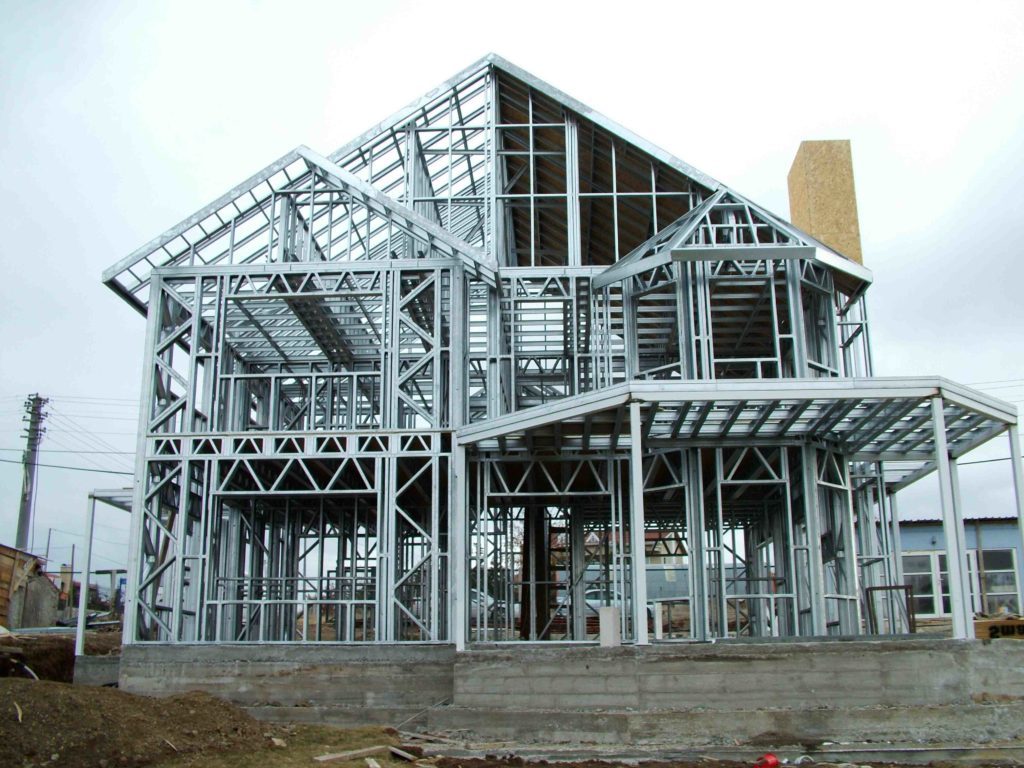How Long Do Steel Frame Houses Last?

What is currently occurring in the home construction market, is that those building their homes are demanding a newer set of must-haves for their structures, and distinct from the requirements of a well-built, cost-effective, and safe structure, is the more prominent requirement for a longer-lasting structure that withstands the test of time, and the rigors of nature.
At the same time, there has been a growth in the numbers of professionals in the current Building & Construction industry who are turning to the strength and durability of using metal – primarily, steel – to build houses, instead of utilizing the traditional wood, stone and brick options. The beginning of the current shift toward the growing preference for the metal in the housing industry, probably began in 1993 when the industry was searching for a high-quality, long-lasting alternative to traditional wood building material, amidst the hike in lumber prices during that period.
House builders who understand the long term value of creating a metal house, over a wooden framed house, know that they are giving their clients the best value for money for today as well as for the long term.
As evidenced by the age of many steel frame buildings around us — including skyscrapers, malls, car parks, and many others, we have evidence that steel can, and does, last for many years. Generally, the average building can last integrally for up to 50 years, but the nature of steel has an advantage over the use of traditional wood, in several areas.
Steel has the following inherent properties, which together with proper maintenance and care, make a steel structure — including a metal house – last far beyond the current expected lifespan of the average building.
MORE RESISTANT TO NATURAL ELEMENTS
Among the critical things which homeowners will consider in terms of the staying power of their home, is its ability to withstand the forces of nature. Metal frame housing is well-suited to meet the needs of homeowners, in this area.
Metal homes are superior to wood-framed buildings, in that a metal house is usually built to resist winds up to 120 Mph. In addition, metal houses are engineered to endure seismic activity up to the Seismic Zone 4 level, plus, they are suited to withstand excessive snow loads.
FIREPROOF
Another important positive toward the longevity of metal houses is steel’s innate ability to withstand heat for a long period and still retain its structural shape and strength. Since steel is not flammable, it, therefore, will not, essentially, feed any fire that might occur in the house, keeping the integrity of the metal house intact, against fires that might incur in and around it.
STRENGTH & DURABILITY
Generally, steel is more durable than wood, its closest building competitor. Firstly, steel is more resistant to water and so will not rot and warp. It’s resistance to water will also ensure that, unlike wood, moisture will not be able to seep internally onto the drywall, and destroy it. Steel is also superior to wood as it will not attract fungus, a major destructive factor that makes wood a less-desirable material than steel. Note that steel is susceptible to moisture penetration, but this factor is mitigated by the use of top-quality coatings and other industrial moisture barriers.
In addition, steel will not attract termites and other pests which usually compromise the strength of wood. Another problem that wood has in terms of its long term strength and durability, is the absence of material consistency. Different types of wood differ in structure due to growing conditions or by region and country, and as such does not have the built-in measurable quality and consistency that steel has.
Another major strong point that establishes steel as the more durable material than wood for constructing homes is that the construction components in steel construction are screwed together, which creates by far, a more secure and long-lasting joining system than a joint that is held together by nails.
MAINTENANCE
There are some integral properties of steel that help it last for an extended period of time. For instance, there is an absence of splitting, mold, mildew, cracking and warping of steel. Steel is also integrally resistant to termites and other pests that affect wood, significantly increasing the lifespan of a steel house. This also means that there is a significantly reduced need and cost for the maintenance of a steel structure, over the duration of its lifetime.
However, it is advisable, as with any other type of house, that a metal house is also maintained to increase the length of its potential age as well as the condition in which it ages.
Maintenance for ensuring that a steel structure lasts for a very long time includes:
- A solid foundation. If any building, including a metal house – is to stand the test of time, it requires a robust footing on which to rest and which will support the weight of the building. As pre-engineered steel metal houses are planned and formulated to the smallest detail, the weight of the steel framing and other steel components are known before construction starts. The already strong foundation, together with the structural integrity of the metal house frame, gives the structure the best chance for optimal stability.
- The lightness of the material. Customized pieces of steel are used in building the prefabricated steel frame. The lightweight pieces, or members, use to build a metal house, help make the building less likely to shift.
